Table of Contents
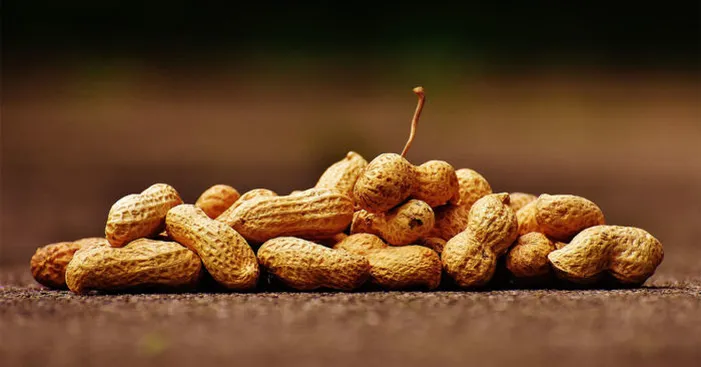
“Peanuts are bad for you!” Some people say and other would argue about that claiming that peanuts are extremely beneficial for our health.
There’s no bold answer to whether peanuts are good or bad for health, however, most natural foods are good for us.
In the case of peanuts, it is the way we consume them and the amount we eat that have the most impact on our health.
Peanuts are among the snacks that you should consume occasionally and not get addicted to.
Think of this: for the same amount of 3.5 ounces (100g), peanuts have two times more calories than chicken.
It’s not just about high calories, peanuts are also very high in fats both saturated and unsaturated.
There are very good reasons for nutritionists and doctors to recommend avoiding excessive consumption of peanuts.
Let’s not forget that peanuts are also full of minerals, vitamins, and proteins that are very beneficial for our health.
However, it is mostly the way we consume peanuts and the amount we ingest is that could lead to bad health issues.
Do peanuts go bad?
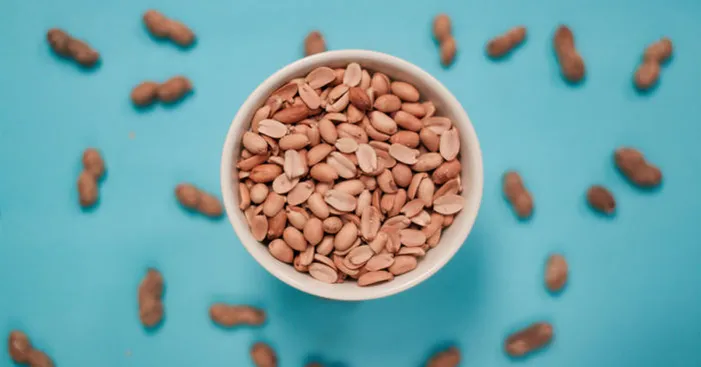
Yes, some nuts are much more oil than the others, it is the existence of a substantial amount of oil in the nuts that makes them go rancid.
Peanuts contain almost 50% oil and that means they can go bad.
Same as most shelled nuts, peanuts can last up to 2 years in-shell.
Another factor that could accelerate oil rancidity is the storage condition, which is why it is always recommended to store nuts in a colder place to keep them fresh as much as possible.
It is very easy to know if peanuts are bad or not because the rancid oil has a very unpleasant unique smell.
You can try one peanut and if it tastes burnt you should probably throw them away.
Generally, rancid nuts are very bad for your health as they contain oxidized oils and those are free radicals that can lead to cardiovascular problems.
Are peanuts bad for you?

There are several cases when peanuts are bad for you mostly depending on the serving size and whether they are processed or not.
For instance, commercial peanut butter is not the healthiest as it contains other additives that lowers the overall health virtues.
As for peanuts, the most common ones are salted and that have bad health implications.
When does peanut butter become bad for your health?
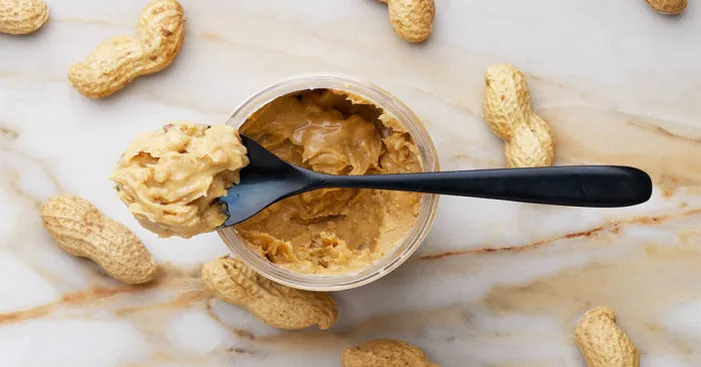
Most of the peanut butter brands found in grocery stores are made not just with peanuts but also with processed palm oil.
Commercial peanut butter is usually low on omega-3 fatty acids and full of omega-6 fatty acids.
According to a study made in 2002 by a European research center “Western diets contain excessive amounts of Omega-6 compared to the regular amounts our bodies need daily”.
The ratio of omega-6/Omega-3 found in most peanut butter is 20:1 and that is very high considering the ideal ratio is no more than 2:1.
Unlike Omega-3, the Omega-6 are pro-inflammatory, and excess in these fatty acids can promote type 2 diabetes, asthma, and obesity.
This is why it is always recommended to go for organic peanut butter that doesn’t contain processed palm oil or make your peanut butter!
Making homemade peanut butter:
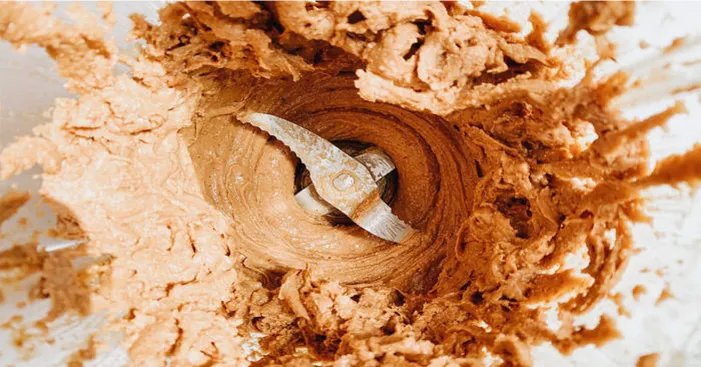
Here are easy steps to make delicious healthy peanut butter in just a couple of minutes:
- Get 2 cups of peanuts and pour them into a blender.
- Blend the nuts for 5 minutes, you will notice that they break easily and as you go the mixture becomes smoother and smoother since the peanuts release their natural oil.
- Store the peanut butter you made in a glass jar and put it in the fridge. It can last for up to 1 month in the fridge as long as there’s minimum moisture exposure.
Note: most peanut butter recipes contain added ingredients such as salt for seasoning.
The recipe above is 100% made of peanuts and that is the healthiest choice.
If you want to be creative, you can add a tablespoon of honey and blend it with the peanut butter until it becomes evenly incorporated.
Consuming peanut butter: Uses of peanut butter
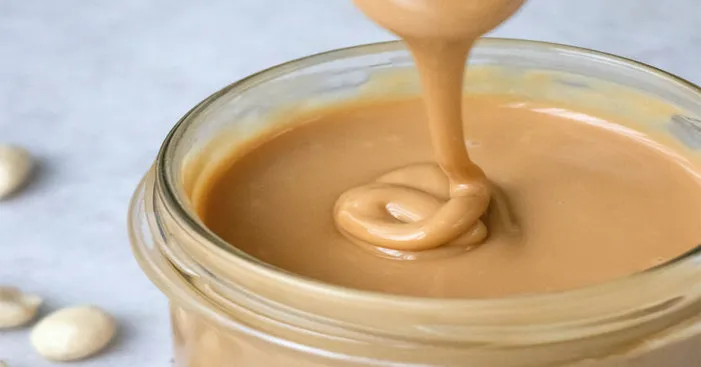
Like all sources of good fats and proteins, peanut butter is ideal for breakfast.
We tend to consume too many quick sugars early in the day.
Peanut butter provides long-lasting energy for the whole morning and prevents hunger pangs during the day.
The feeling of fullness lasts longer with this type of food.
Spread peanut butter on anything you like! Protein pancakes, whole grain bread, toast, etc.
You can also incorporate it into your snacks and homemade preparations to take advantage of its benefits.
If you make your snacks (energy balls, protein, or energy bars…), peanut butter is an ingredient of choice.
Finally, you should also know that it can be used in savory recipes!
Indeed, if it marries perfectly with fruits, it can also be cooked for lunch or dinner.
Very popular in the African culinary culture, peanut butter offers new flavors to your meals, in addition to many essential nutrients.
This is an opportunity to try new recipes!
When do peanuts become bad for you?
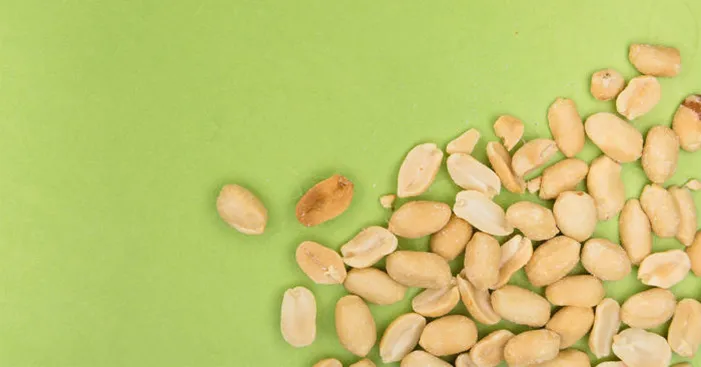
Peanuts belong to the legume family alongside lentils, beans, and chickpeas …
They contain a lot of essential nutrients and have a very crunchy and satisfying texture with a special nutty flavor.
Generally, every natural food is beneficial for our health however over consumption usually comes with side effects.
For instance, excessive consumption of peanuts may lead to health issues related to high-calorie and high-fat diets.
Also, over-consumption of peanuts could endanger our health as it contains anti-nutrients and possibly toxins.
Extreme sodium content:
While unsalted and unroasted peanuts are very good for your health, it is important to mention that most commercial products are not healthy.
For instance, salted and roasted peanuts contain about 2g of salt per 3.5 ounces.
That means just a handful of them can provide nearly 0.5g of sodium and that’s 15% of the daily recommended value.
You can imagine what happens if you eat a couple of handfuls of salted peanuts!
Don’t forget that the food we eat daily is already providing sodium, and excessive sodium in the body can lead to hypertension and cardiovascular problems.
Incomplete source of protein:
For vegetarians, the protein found in peanuts is not a complete source of protein as it lacks lysine, threonine, and methionine, three essential amino acids.
To cover the lack of other proteins, it is important to include other vegetables in your diet.
You can count on peanuts for the rest of the amino acids, but you should eat other vegetables to get a complete protein, here are a few ideas:
– Methionine: consider eating flax seeds, sunflower seeds, or sesame seeds.
– Threonine: consider eating Soja beans, flaxseed, or potatoes.
– Lysine: consider eating soybeans, mung beans, or chickpeas.
Allergy:
Many people are allergic to peanuts, sometimes without even knowing. In this case, eating peanuts can cause severe health problems.
Peanuts allergy may begin with ingestion or even inhalation or skin contact which immediately put the immune system on alert.
The allergic component in peanuts is a type of protein that behaves like an antigen and stimulates the production of antibodies.
Mild symptoms of peanuts allergy:
- Tingly mouth and swollen lips.
- Hives.
- Rash.
Severe symptoms of peanuts allergy:
- Asthma.
- Cough.
- Loss of consciousness.
- Difficulties breathing.
- Blood pressure drops.
- Anaphylaxis reaction.
Risk of mold contamination:
Aflatoxins are a group of toxins created by a specific type of fungus found in peanuts.
This toxin flourishes in humid and hot regions which is a perfect environment to grow peanuts.
Due to the permeability of peanut pods and the fact that they grow within the root system underground, they are exposed to both humidity and temperature.
As a result, peanut pods create a perfect environment for aflatoxins to grow where there is both humidity and warmth.
We can get infected with aflatoxin by consuming peanuts or even by inhaling their dust during harvest.
Aflatoxins are carcinogenic and a high exposure could lead to acute liver failure or even liver cancer HCC.
The National Cancer Institute warns that consuming large amounts of peanuts over a long period can increase the risk of having HCC.
You may be thinking that roasting peanuts or processed products have fewer aflatoxins but you’re wrong!
Extreme heat or processing does not kill all the aflatoxins and this means you can even find them in commercial peanut butter products.
The best way to extremely reduce the amounts of aflatoxins is by fermenting or soaking peanuts.
We should also mention that dry-roasted peanuts are free of carcinogens and there’s no harm in eating them.
Furthermore, some brands are handling fungus and toxins in a very good way.
Also, the FDA is constantly testing aflatoxin levels in peanuts and processed peanuts products.
Therefore, make sure you only buy FDA-approved peanut products from well-known brands, or just make your own peanut butter!
An imbalance between omega 6 and omega 3:
Peanuts are rich in omega 6 fatty acids with over 4.3g per serving (1 ounce, 28g) and that is over 30% of our daily need.
Omega 6 fatty acids help reduce bad cholesterol, improve immunity, and help the body produce energy.
However, the issue here is that omega 6 and omega 3 must be in the right balance in order to be beneficial.
That is the problem with peanuts, they extremely lack omega 3 and over 99% of their polyunsaturated fat comes from omega 6.
When we have an imbalanced diet more omega 6 than omega 3 can lead to bad inflammations.
Possible side effects of that imbalance range from obesity, arthritis, heart disease… according to GB HealthWatch.
According to researches, a diet low in omega 3 and high in omega lead to increased insulin resistance and weight gain.
Nowadays, most specialists recommend consuming omega 6 and omega 3 in a ratio of 2-1 to maintain weight.
Results of a study published in Nutrients in 2016 found that the ratio of omega-6 to omega-3 plays an important role in obesity.
Researchers found that high omega-6 levels led to increased insulin resistance and weight gain.
The conclusion was that a balance of omega-6 to omega-3 in a ratio of 1-1 to 2-1 was recommended for weight management.
Thus, as long as you eat peanuts moderately with no more than 1 ounce a day, you have nothing to worry about.
This is because we consume other food some of which are good sources of omega 3 hence they help you reach that beneficial polyunsaturated balance.
Anti-nutrients buildup:
Peanuts contain a good amount of phosphorus with 107 mg per ounce and that is around 15% of our daily need.
Nonetheless, the phosphorus offered by peanuts is stored in the form of “phytic acid” or “phytate”.
Phytates are anti-nutrients because they reduce the absorption of other beneficial nutrients such as Zinc, Iron, and calcium.
As a result, it could even lead to minerals deficiency which has a bad impact on our health.
Also, phytates reduce the ability to digest protein and therefore lead to skin degeneration, irritation of the intestines, and losing muscle mass.
To avoid phytates buildup, the best to do is to limit the consumption of food high in phytic acid.
Among the foods high in phytates, we mention almonds, walnuts, sesame seeds, soybeans, peanuts …
No wonder why the recommended serving of most nuts is no more than a handful (1 ounce, 28g).
Conclusion:
To ensure you get the most benefits of peanuts without endangering your health or risk gaining weight, it is recommended to:
- Eat no more than a handful of peanuts a day or 2 tsp of peanut butter.
- Raw, dry-roasted or boiled peanuts free of salt are the healthiest choices.
- Purchase raw organic peanuts and use them to make homemade butter free of salt and processed palm oil.
Peanuts are bad for you when it is:
- Salted roasted peanuts or commercial processed-palm oil peanut butter.
- More than 1 ounce (28g or a handful) peanuts.
